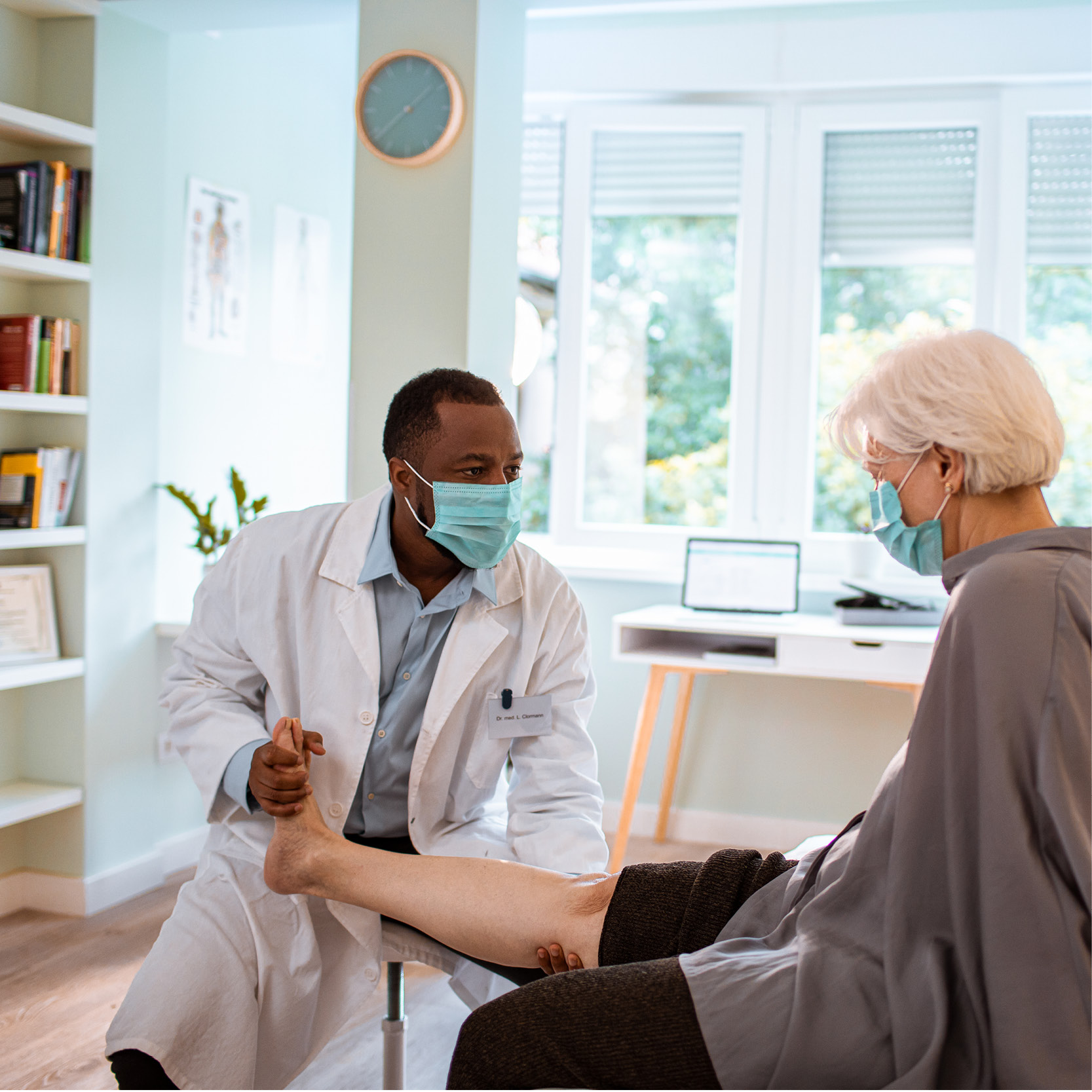When we think about light, skin care may not always be the first phrase that comes to mind. But a growing number of patients are undergoing phototherapy – a common dermatology treatment that helps to lessen the effects of certain skin conditions.
Simon Hernandez, MD, is a dermatologist at Genesee Valley Dermatology & Laser Center in Brighton who uses phototherapy with his patients. He explains how phototherapy works, what a typical treatment session looks like for patients, and which skin conditions benefit from phototherapy.
How phototherapy works
Phototherapy, also called light therapy, uses specific wavelengths of light to treat various skin conditions. Using lamps that give off different types of ultraviolet (UV) light, dermatologists can regulate the body’s immune response for certain skin conditions characterized by overactive immune and skin cells.
Most phototherapy uses narrow band UV-B light – meaning the UV-B light wavelengths used are very specific. This specific type of light therapy is not used for anti-aging or rejuvenation.
Some of the conditions treated using phototherapy include:
- eczema (atopic dermatitis)
- lichen planus (LP)
- polymorphous light eruption
- psoriasis
- specific types of skin cancers (cutaneous T cell lymphoma)
“Phototherapy can increase production of certain molecules that actually help to suppress tumor cells, which can help with certain skin cancers,” Dr. Hernandez said.
Starting phototherapy treatment
Patients will usually meet with a dermatologist beforehand to discuss how light therapy or phototherapy can help them.
Once an appointment is scheduled, the patient will arrive and be brought to a phototherapy booth that looks like an upright tanning bed. A nurse will bring them into a private area where they can disrobe behind a curtain and put on eyewear and cover sensitive areas before stepping into the booth.
The first phototherapy session itself may only last a few seconds – less than a minute. After finishing the treatment, the patient gets dressed and schedules their next appointment.
Most patients will have 2-3 phototherapy sessions each week, with 24-48 hours in between each session to see how their skin is reacting to the treatment. Depending on the amount of inflammation or sensitivity to treatment, the phototherapy technician will adjust the intensity and exposure of light for a patient to reach an appropriate dose.
“After each visit, a patient will be exposed to more light for longer periods of time until their providers find a dosage that is right for them,” Dr. Hernandez said.
Between sessions, patients can be looking for any redness or sunburn-like effects to help their dermatology team during their next visit.
Phototherapy units can be purchased for use at home; these units have UV-specific light panels that can be propped up. Insurance coverage for these home phototherapy units depends on their plan, so patients should be sure to check with their insurance provider to see what is covered.
Overall, Dr. Hernandez estimates most phototherapy patients take 1-2 months to find the correct light dosage that works best for them and see a response to the treatment. How long that treatment lasts depends on the patient and their specific skin condition. Some will continue treatment only until their condition clears up, while others need to continue phototherapy sessions for several months or years.
Side effects of phototherapy
Side effects from phototherapy are similar to sun exposure effects, which include:
- sunburn or redness
- itching
- potential for premature skin aging
There are some patients who should avoid phototherapy due to increased health risks. This includes patients with lupus, medications that increase sensitivity to sun (doxycycline, methotrexate, etc.), or multiple melanoma or squamous cell carcinomas
Patients should contact a healthcare provider immediately if they experience:
- blistering
- blurry vision or changes in vision
- changing skin lesions or moles
- fever/chills
- intense itching
- severe sunburn symptoms
- swelling
“Phototherapy is one of the safest treatment options for a lot of chronic skin conditions,” Dr. Hernandez said. “With our highly-controlled use of light, we can reduce some of the risks of sunburns and some skin cancers. It’s effective when used correctly and is a great option for patients who are tired of using a lot of medications.”










